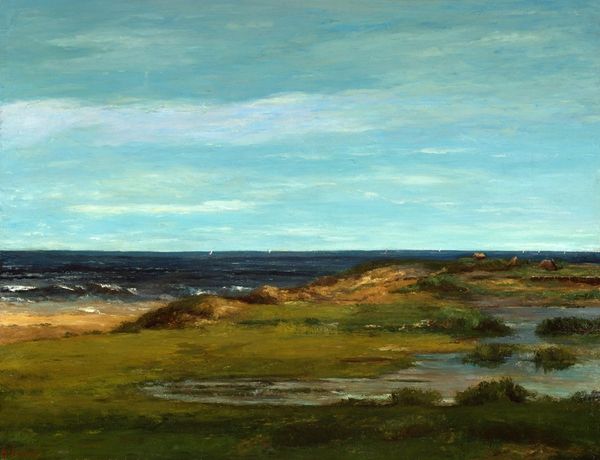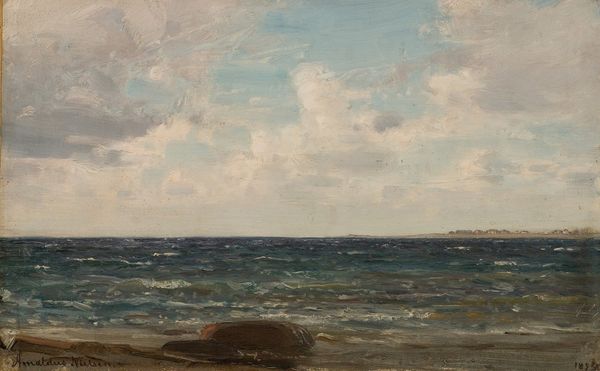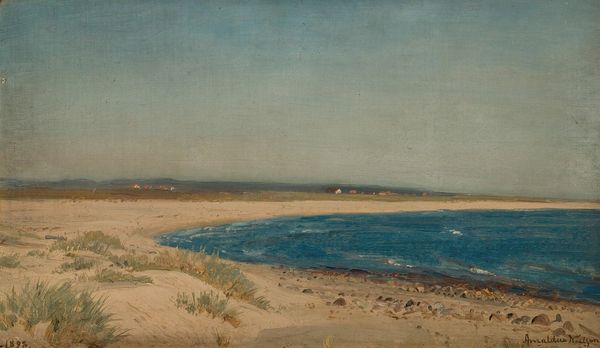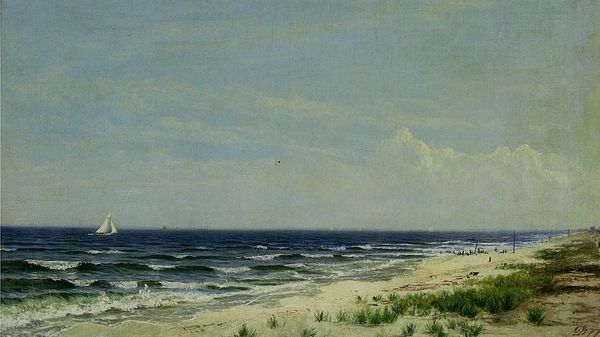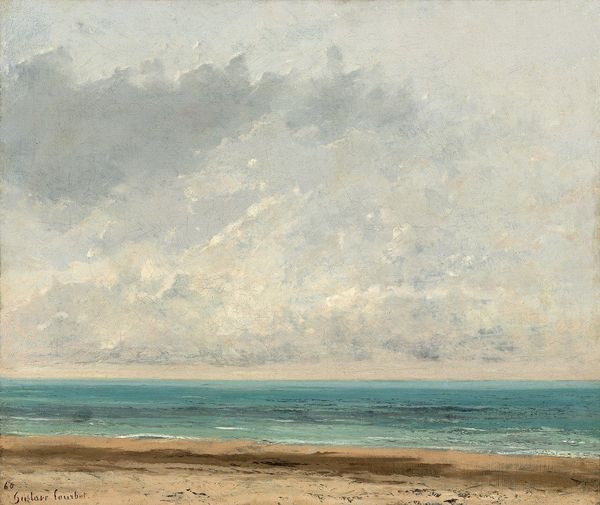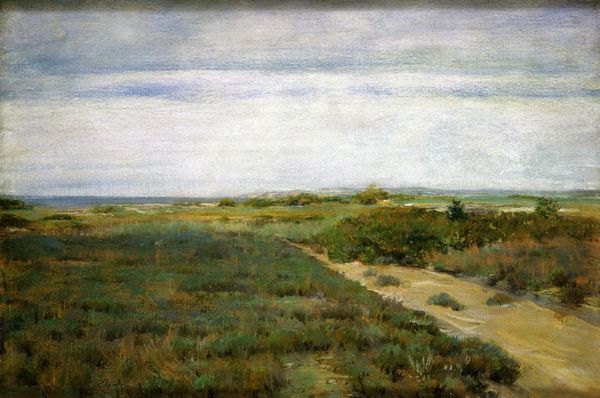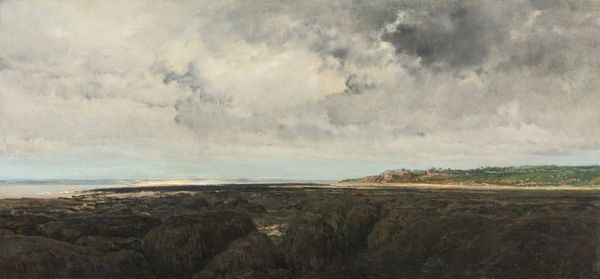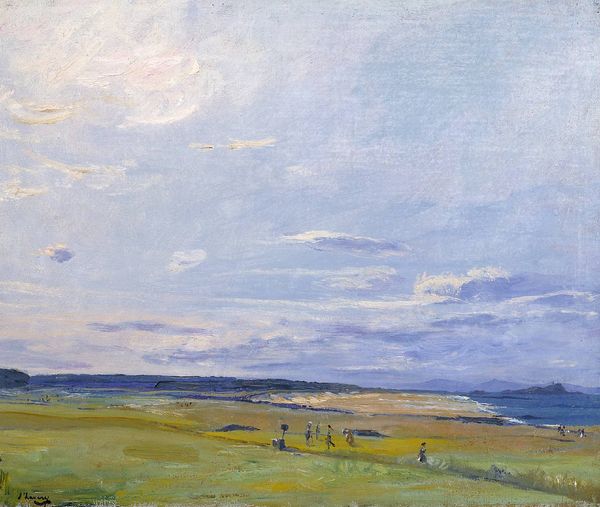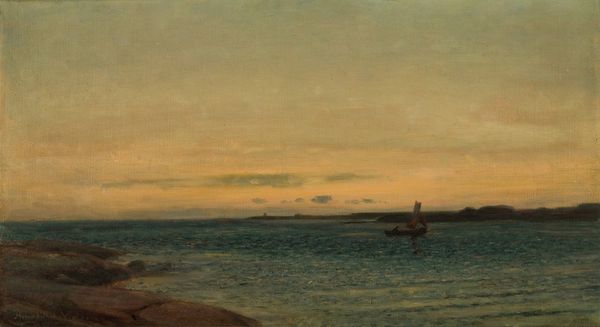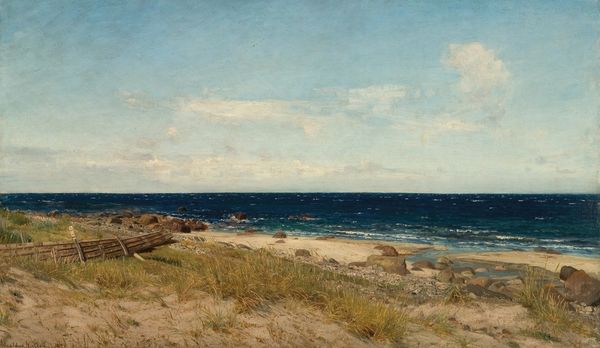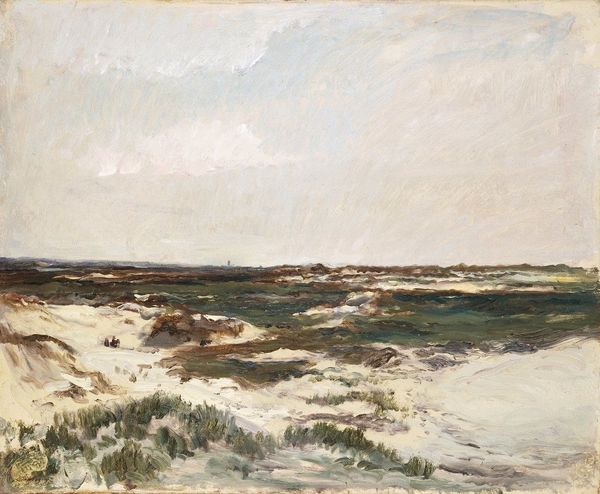
Seacoast (Souvenir of Les Cabanes) 1857
0:00
0:00
gustavecourbet
Philadelphia Museum of Art, Philadelphia, PA, US
plein-air, oil-paint
#
sky
#
plein-air
#
oil-paint
#
landscape
#
oil painting
#
ocean
#
seascape
#
natural-landscape
#
water
#
naturalism
#
realism
#
sea
Copyright: Public domain
Curator: This is Gustave Courbet's "Seacoast (Souvenir of Les Cabanes)," painted in 1857. It resides here at the Philadelphia Museum of Art. Editor: Immediately, I'm struck by its quietness. It's a broad, almost uneventful landscape. You have this muted palette of greens and blues. What exactly was Courbet up to here? Curator: Courbet, a central figure in Realism, was determined to depict the world as he saw it. Here, far from idealizing the landscape, he presents an unvarnished view of the French coast. We also have to think about the burgeoning tourist industry. The title itself points to the painting being something of a "souvenir". Editor: Which immediately tells me this isn't some grand, romantic vision of nature, right? More like a record of a specific place, maybe even a place associated with leisure and commodity. Look at how the brushstrokes render the vegetation – thick, almost crude, emphasizing the materiality of the paint itself. This challenges academic painting. Curator: Absolutely. Courbet was interested in the democratizing effect of Realism. By painting ordinary landscapes, accessible scenes, he brought art closer to the masses. This contrasted sharply with the allegorical and historical paintings favored by the Academy, reflecting his socialist leaning. Editor: It’s intriguing how he builds the painting up from the ground. You can almost feel the texture of the grass and the dampness of the tidal pools. These details would be the product of Courbet’s decision to embrace the practice of plain-air painting, making the work a testament to the physical act of observation and creation outside of the studio. How subversive! Curator: It’s interesting to think of the image within the political context, considering its exhibition at the time. The landscape offers a glimpse into the social milieu of mid-19th-century France as the population becomes increasingly aware of social and economic inequalities. Editor: Indeed. The means of its production become part of the message, connecting the canvas to the labor involved in representing it. The painting stops simply representing landscape and shows us the mechanics of representation. Seeing it now has helped me see it in a totally new way! Curator: Precisely! Courbet was a master of subtly embedding his revolutionary politics into seemingly benign images. It prompts questions about how the art market shapes our understanding of nature and labor.
Comments
No comments
Be the first to comment and join the conversation on the ultimate creative platform.
